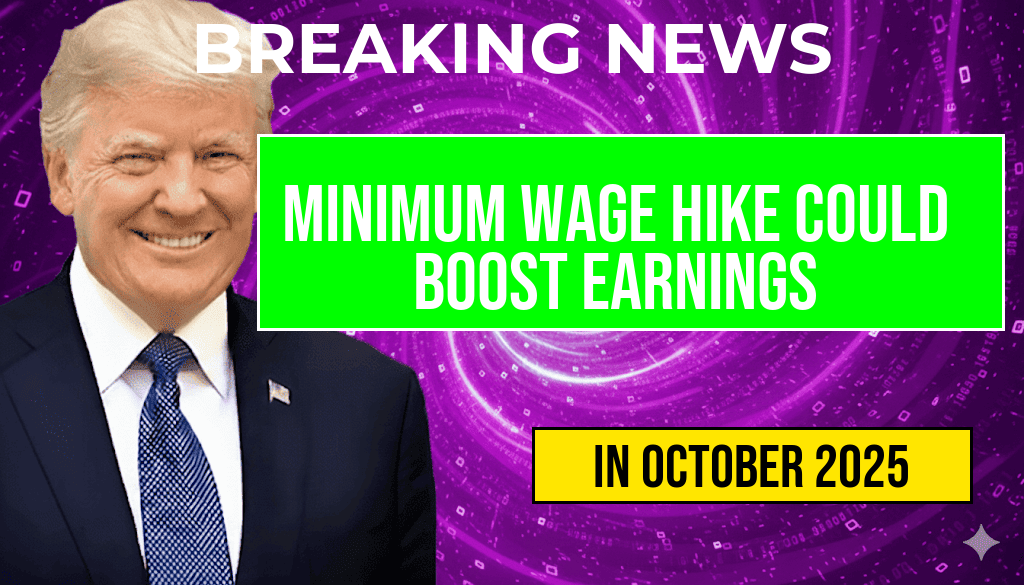The proposed increase of the federal minimum wage to $15 per hour stands to significantly impact millions of American workers. According to recent analyses, raising the wage floor could boost annual earnings by approximately $3,300 for roughly 32 million employees currently earning near the minimum. This adjustment aims to address longstanding disparities in income and cost of living, especially as inflation continues to challenge household budgets across the nation. While some critics express concerns about potential economic repercussions, supporters highlight the positive effects on poverty reduction and consumer spending. The policy shift, if enacted, would mark a historic elevation of the federal wage standard, influencing employment dynamics and economic growth in various sectors.
Potential Economic Impact of the Minimum Wage Hike
Increased Earnings for Workers
Data indicates that nearly half of all minimum wage earners would see a substantial increase in their annual income. For the estimated 32 million workers earning less than or around $15 an hour, a wage hike translates into more discretionary income, which could bolster local economies. Based on current employment figures, the wage boost amounts to an approximate $3,300 annual increase per worker, a figure derived by multiplying the hourly wage increase by average weekly hours and weeks worked annually.
Potential Effects on Employment and Business Operations
Economic analyses suggest that raising the minimum wage could have mixed effects on employment levels. Some studies predict a modest reduction in low-wage jobs, particularly in sectors with tight profit margins such as retail and hospitality. However, other research points to increased worker productivity and reduced turnover, which can offset potential employment declines. Small businesses may face challenges adapting to higher labor costs, but larger corporations might absorb the increase more easily, especially in high-demand areas.
Regional Variations in Impact
| Region | Average Additional Annual Income | Cost of Living Index (2023) |
|---|---|---|
| Northeast | $3,400 | 128 |
| South | $3,200 | 104 |
| Midwest | $3,250 | 102 |
| West | $3,400 | 138 |
The financial benefits of the wage increase are expected to vary across regions, with higher gains in areas where the cost of living is elevated. For instance, workers in the West, where housing and transportation costs are higher, would see a comparable increase in purchasing power relative to their regional expenses.
Broader Social and Economic Considerations
Addressing Income Inequality
Advocates argue that elevating the federal minimum wage is a critical step toward reducing income inequality. By ensuring that the lowest-paid workers receive a more livable wage, the policy aims to lift many out of poverty, decrease reliance on government assistance programs, and promote economic mobility. Data from the U.S. Census Bureau indicates that nearly 11% of Americans live below the poverty line, a figure that could decline with improved wage standards.
Cost of Living and Inflation
Proponents also emphasize that the wage increase aligns with inflation trends and rising living costs. The Consumer Price Index (CPI) has shown consistent growth over recent years, diminishing the purchasing power of minimum wage workers. Adjusting wages upward helps preserve their ability to afford essentials such as housing, healthcare, and food.
Policy Pathways and Political Landscape
The federal minimum wage has been a contentious issue in Congress, with debates centering around economic feasibility and regional disparities. While some policymakers advocate for a phased approach to minimize disruptions, others call for immediate implementation to address urgent wage stagnation. Several states and municipalities have already established higher minimum wages, serving as pilots for potential federal adoption. The Biden administration has expressed support for a $15 minimum wage, citing it as a step toward economic fairness.
Sources and Further Reading
- Wikipedia: Minimum wage in the United States
- Forbes: How a $15 Minimum Wage Would Change the Economy
- U.S. Bureau of Labor Statistics: Consumer Price Index
Frequently Asked Questions
What is the main change proposed in the federal minimum wage?
The proposed change involves increasing the federal minimum wage to fifteen dollars per hour, impacting millions of workers nationwide.
How many workers could benefit from the minimum wage increase?
Approximately thirty-two million workers could see a boost in their annual earnings due to the wage increase.
What is the estimated increase in annual earnings for affected workers?
The increase could lead to an approximate three thousand three hundred dollars boost in annual earnings for those workers.
Which workers are most likely to benefit from this wage increase?
Workers earning near or below the current minimum wage are most likely to benefit, especially those in low-wage industries and entry-level positions.
What are some potential economic impacts of raising the minimum wage to fifteen dollars?
The wage increase could improve worker income and living standards, but may also influence business costs and employment levels, depending on implementation and economic conditions.

Leave a Reply